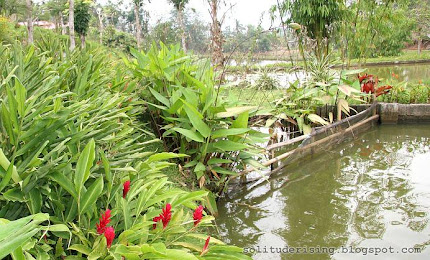"Master said, God had given men reason, by which they could find out things for themselves..."
"Black Beauty"
by Anna Sewell
"Black Beauty"
by Anna Sewell
From red stem to black stem.
Admittedly, my knowledge of plants and their behaviors were very limited when we started collecting for the garden project. As I began to research on what to get, that's the only time I learned more about the different types of bamboos including those with black colored culms (stems).
From what I've seen in the internet, there are only a few species of what is called a "black bamboo", namely Phyllostachys nigra, Gigantochloa atroviolacea and Bambusa lako. Please let me know if there are others. Of the three, P. nigra is what I prefer most. But because it's a running type bamboo I thought best not to deal with the hassles and headaches of controlling its runaway shoots.
I don't know what Black Bamboos are available in the market in our corner of the world, so in 2009, when I asked Mom to buy some Black Bamboos I specifically said to look for those with a clumping behavior. When I saw pictures of the young bamboos my mother bought, their culms exhibited a deep black coloration, I thought we had it. But as the bamboos grew and matured, their black color seemed to be fading also. Have we been duped again?
Turning to the internet again I read that the culms of both Gigantochloa atroviolacea and Bambusa lako start out green and as they age they slowly turn to black, or at least dark to almost black. I have no idea what species of bamboos we got because they were bought from a garden store where the retailers are not familiar with the botanical names of the plants they sell.
I'm a very skeptical person so I've lowered my expectation to the point that I believe these are not true Black Bamboos. Maybe these are hybrids? Black Bamboos or not these living things deserve a place under the sun, so even if I'm a bit disappointed, they are staying in their current location to live their long lives to the fullest.










